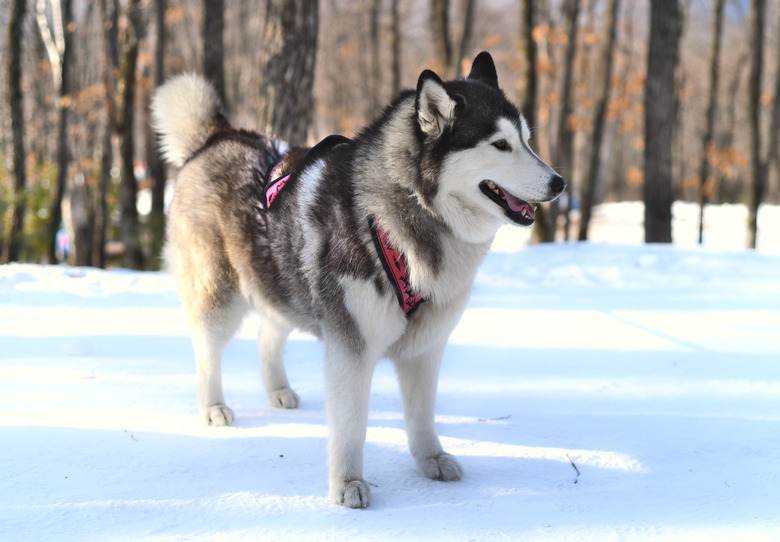Malamute Dog Breed Facts & Information
The Alaskan malamute is native to Alaska and is named for the Inuit tribe Mahlemut. These Arctic sled dogs can travel long distances carrying heavy loads. This friendly breed can bring joy and companionship to your family, but consider their personality and exercise needs carefully before you bring a malamute dog into your home.
Alaskan malamute history
Alaskan malamute history
The Alaskan malamute is believed to be a descendant of the domesticated wolf dogs who accompanied the Paleolithic hunters who crossed the land bridges of the Bering Strait and migrated into the North American continent roughly 4,000 years ago. They are the largest and oldest of the Arctic sled dogs.
They were recognized by the American Kennel Club in 1935. Alaskan malamutes are cousins to dog breeds such as the Siberian husky and Samoyed.
Alaskan malamute characteristics
Alaskan malamute characteristics
The purebred Alaskan malamute is a large dog and a member of the AKC's working group. An adult female weighs 75 pounds and reaches 23 inches in height. An adult male weighs around 85 pounds and reaches around 25 inches in height.
Malamutes are spitz-type strong, substantial dogs. They have erect ears, a plumed tail, and a medium-length, double coat that comes in a variety of colors including white, black and white, gray and white, blue and white, and sable and white. They may have a black or gray mask.
Alaskan malamute temperament & training
Alaskan malamute temperament & training
Breed is not a reliable indicator of personality; however, this breed is described as affectionate, playful, and loyal. Their friendly nature means that despite their size, they aren't the best guard dogs. They tend to be quite vocal but will talk or howl rather than bark like other breeds.
Start obedience training and socialization during puppyhood and be sure to use only positive reinforcement training methods. This is critical, as the malamute is a large breed that has a tendency to become pushy and dominant over children or other family members.
Alaskan malamute grooming
Alaskan malamute grooming
The breed requires daily brushing to prevent tangles that can eventually lead to matted fur, fungal infections, and hot spots. Use a pin brush to brush the outer coat and a metal comb to make sure tangles are removed from the undercoat. Use an undercoat rake during shedding season to help remove loose hair. Be sure to check and clean the ears regularly and trim the dog's nails.
Alaskan malamute exercise & health
Alaskan malamute exercise & health
Alaskan malamutes need an active family. They are high-energy working dogs and need moderate levels of mental stimulation. They were bred to work and can handle heavy loads. They need a lot of exercise, so in addition to regular walks, consider participating in canine sports, such as weight pulling competitions, agility, and obedience. You can also have your malamute pull you on a sled or skis.
The malamute breed has an expected life span of 10 to 14 years. There are several health conditions that affect the malamute, including elbow and hip dysplasia, chondrodysplasia or dwarfism, day blindness, hypothyroidism, von Willebrand's disease, and inherited polyneuropathy. Responsible breeders will test their dogs and puppies for inherited health problems.
Alaskan malamute puppies
Alaskan malamute puppies
Malamute puppies reach their full size when they are 16 to 19 months of age. At 3 months of age, female malamutes typically weigh between 26.3 and 29.9 pounds and will grow to between 49.1 and 56 pounds by the time they are 6 months old. At 3 months, males weigh between 28.8 and 33.3 and will grow to 53.9 to 62.2 pounds at 6 months.
The Alaskan Malamute Club of America offers tips to help you find reputable breeders and healthy malamute puppies.
